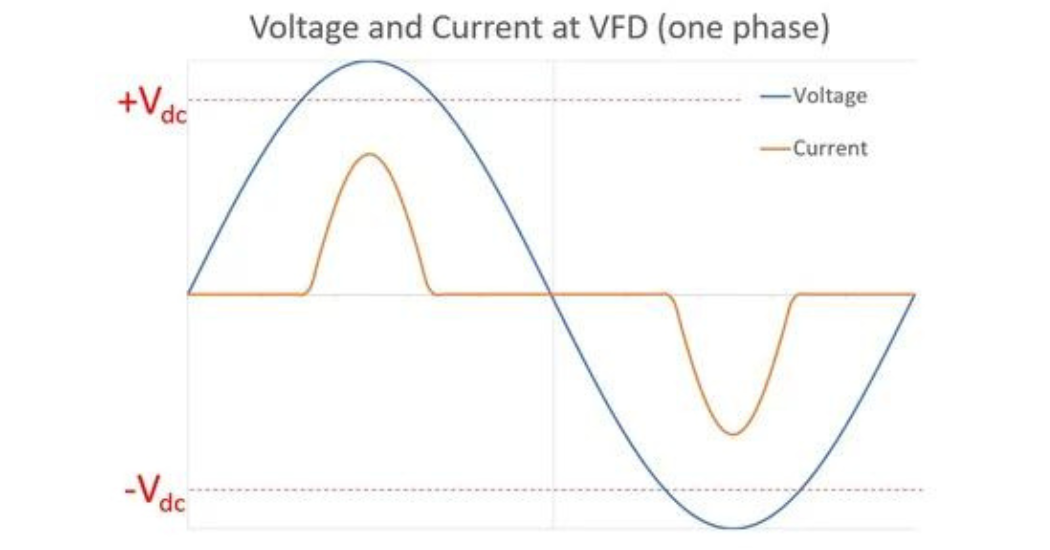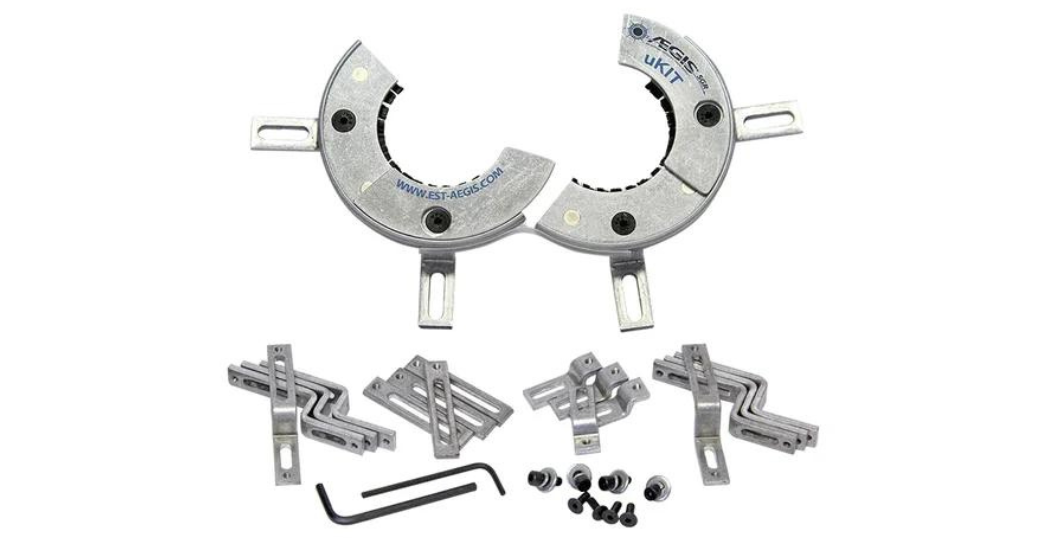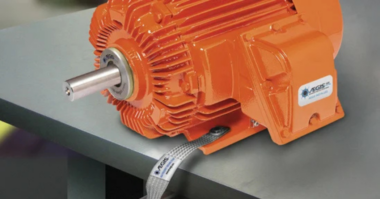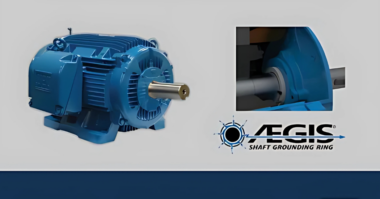An attendee at a recent webinar asked EST-AEGIS about electrical bearing damage by harmonic currents created by VFDs. Bearing currents from harmonics are very different from the usual type of VFD-sourced bearing current because they are on the line/supply side of the drive. The bearing currents which is normally talk about are on the load side. Harmonics don’t get talked about a lot, but they were happy to explain.
VFDs work by rectifying ac current and storing it in a capacitor bank (the dc bus). Basically, whenever the voltage in a phase is higher than the dc bus voltage, current will flow in to charge the capacitors (Figure 1 – note that in a three-phase system, you actually get two current pulses per voltage peak, but the idea is the same.) This makes VFDs nonlinear loads.
 A linear load draws a steady sinusoidal current from the supply. A nonlinear load is any device that does not draw a smooth sinewave of current from the supply. Here’s an analogy: Driving a linear load is like pushing a well-maintained shopping cart. You can push it smoothly along with no jerks or snags. A nonlinear load is like pushing a cart with a sticky wheel that jams every two steps, and you need to shove it to get it moving again. Not smooth.
A linear load draws a steady sinusoidal current from the supply. A nonlinear load is any device that does not draw a smooth sinewave of current from the supply. Here’s an analogy: Driving a linear load is like pushing a well-maintained shopping cart. You can push it smoothly along with no jerks or snags. A nonlinear load is like pushing a cart with a sticky wheel that jams every two steps, and you need to shove it to get it moving again. Not smooth.
Nonlinear loads are a problem because they distort the supply voltage and current. Look at Figure 1 again. The drive only draws occasional pulses of current, not a smooth sinewave. If you think of the power supplied by a utility or generator as a large sinewave, drawing out those occasional pulses will put dents in the supply current wave, distorting it. Distorted current in turn distorts the voltage waveform.
 Without getting into Fourier series, you can treat the distortion as being caused by waves with frequencies that are whole number multiples of the supply frequency (50/60 Hz). These higher-frequency waves (at 100/120 Hz, 150/180, etc.) are called harmonics, and they are introduced to the supply by nonlinear loads, including drives.
Without getting into Fourier series, you can treat the distortion as being caused by waves with frequencies that are whole number multiples of the supply frequency (50/60 Hz). These higher-frequency waves (at 100/120 Hz, 150/180, etc.) are called harmonics, and they are introduced to the supply by nonlinear loads, including drives.
This causes several problems… upstream of the drive, elsewhere in the facility. Having many drives or other large nonlinear loads in a facility can cause problems not only with other circuits in the facility itself but in other nearby facilities served by the same utility. These problems include interference with sensors; overheating transformers, motors, and generators; and, yes, bearing currents. And again, harmonics generated by one drive can attack motors other than the one controlled by that drive.
Harmonics produce (relatively) low-frequency circulating currents in motors. Like high-frequency circulating currents in larger motors powered by drives, harmonic circulating currents can be mitigated with one insulated bearing. Unlike VFD-caused high-frequency circulating current, they are best mitigated by reducing the supply’s harmonic content. Harmonic mitigation is a field in itself. For a fuller discussion of harmonics and their mitigation, see this newsletter from Trane (Ingersoll Rand) or this presentation from the Power & Energy Institute of Kentucky.
As for this post, the takeaway is that the bearing currents produced by harmonics are separate from what we normally call VFD-caused bearing current. The big difference is that mitigating harmonics will not reduce shaft voltage discharge, high-frequency circulating current, or rotor ground current. For those, you respectively need AEGIS® shaft grounding, an insulated bearing opposite the grounding ring, and good bonding back to the drive or a grounding strap between the motor and load frames.




